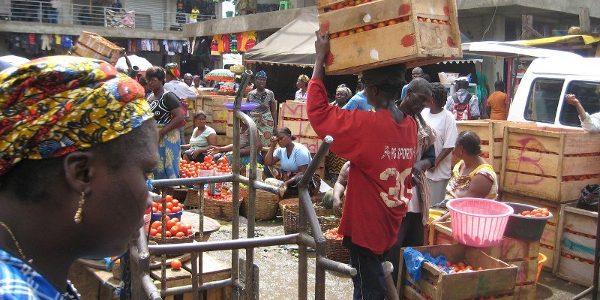What is the difference between traditional trade and modern trade?
Trade is the act of buying and selling of goods or services. Barter trade and currency traders are the two main types of trade in the world.
The main difference between traditional trade and modern trade is that traditional trade demand tends to be seasonal while that of modern trade is consistent.
Read More: Difference between Good and Services
Comparison Table (Traditional Trade vs Modern Trade)
| Basic Terms | Traditional Trade | Modern Trade |
| Meaning | It is a trade organization that tends to work for businesses that are running currently and have effective output. | It is a trade organization that tend to work by putting up commodities in the market and have their personal space for usage |
| Demand | Seasonal | Consistent |
| Customer Contact | Retailers tend to give goods to customers | Customers tend to choose goods on their own |
| Order settlement | Based on the current stock | Based on promotional demands and advance booking |
| Principal Time | Short and direct | Structured |
| Product Variety | Restricted | Excessive |
| Order Gratification Time | No specific time | Definite time |
| On-time Provisions | Minor focus | More emphasis |
| Credit Rotation | Short credit rotation | Long credit rotation |
| Operational | Operated by owner’s physically | Operated as a model branch chain network |
| Procedure | One way and direct | Simple and flexible |
| Finances of Sale | Commodities sold at maximum retail price | Products are sold at discounted prices |
What Is Traditional Trade?
Traditional trade is a form of trade organization that comprises of a network of small retailers, dealers, stocklists, shopkeepers, wholesalers, distributors, and open market traders.
All customers tend to buy products at retail prices. Besides that, the demand for trade tends to be seasonal since all the products are bought directly from the producers.
The good news is that there are few traditional trade stores focus on the timely delivery of products to their customers. However, the cash flow in traditional trade is short and instant.

What Is Modern Trade?
Modern trade is a form of trade organization that comprises of all luxury, gigantic, chains, and franchise stores. The trade tends to offer a wide variety of products to consumers at a discounted price.
The type of trade is quite common in the United States of America, China, and India. The demand for the products in the trade is consistent.
Shortcomings of Modern Trade:
- Tend to trigger impulse buying
- Result in the monopoly of certain brands
- Has led to fast consumer moving goods companies

Main Difference between Traditional and Modern Trade
- Traditional trade has seasonal demand while modern trade has consistent demand
- Tradition trade have close interaction between customers and the owner whereas there is no customer interaction in the modern trade
- Traditional trade products are sold at maximum retail prices whereas modern trade products are sold at discounted prices
- Modern trade procedure is simple and flexible while traditional trade procedures are one way and direct
- Modern trade has long cash flow whereas traditional trade cash flow is short and instant
- Modern trade is run by a model branch network whereas traditional trade is operated by the owner physically
- Traditional trade has a short credit rotation whereas modern trade has a long credit rotation
- Traditional trade has minor focus whereas modern trade has more emphasis
- Traditional trade has limited product variety whereas modern trade has unlimited product variety
- The principal time of modern trade is structured whereas that of traditional trade is short direct.
Read More: Difference between President and CEO
Similarities between Traditional and Modern Trade
- Both are a popular form of trade
- Both involve the distribution of products to final consumers
- Both tend to earn profit
- Both involve transactions
Comparison Video (Traditional Trade Vs Modern Trade)
Summary
Trade is the exchange of goods and services. Traditional trade is a trade organization run by small scale retailers while modern trade is a trade organization managed by a model branch network.
Besides that, the economies of scale of modern trade are quite large while traditional trade has a small economy of scale.
The most exciting thing is that both trades tend to happen across the world and they serve the final consumer of the products.
Read More: Difference between Vendor and Supplier
More Sources and References
- https://www.premise.com/the-state-of-traditional-trade-in-emerging-markets/
- https://theatlas.com/charts/HyUZJkYyZ
- https://en.wikipedia.org/wiki/Traditional_trades